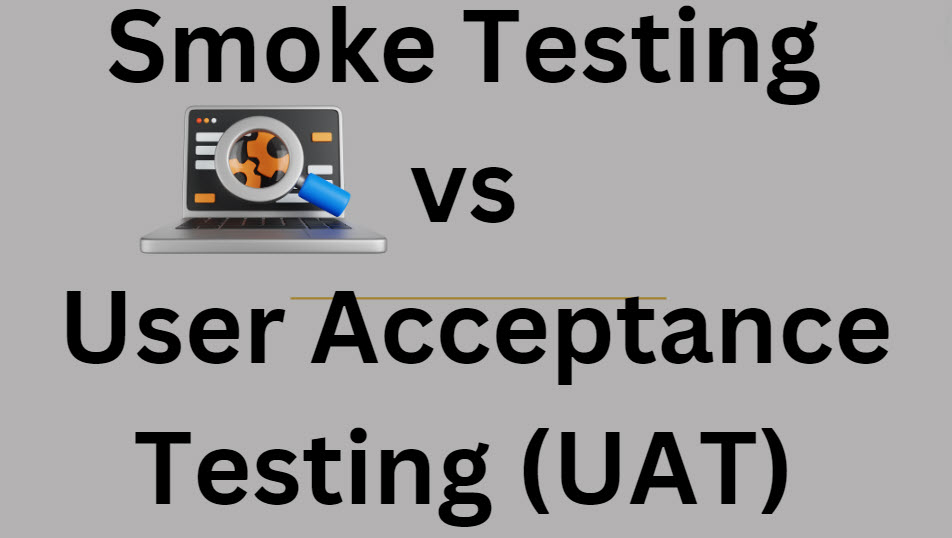Smoke testing and User Acceptance Testing (UAT) are two important phases in the software testing process, but they serve different purposes and occur at different stages of development.
Smoke testing
Smoke testing is performed early in the testing process and focuses on verifying the basic functionality and stability of a software build. It’s a quick and simple set of tests designed to check if the core features of an application are working as expected. The main goal of smoke testing is to ensure that the critical functionalities of the build are intact and that the application is stable enough for further testing.
User Acceptance Testing (UAT)
On the other hand, User Acceptance Testing (UAT) is conducted later in the development cycle, typically after other forms of testing have been completed. UAT is performed to ensure that the software meets the user’s requirements and is ready for real-world use. It involves end-users or clients testing the software to verify that it can handle required tasks in real-world scenarios.
Key differences between smoke testing and UAT
Timing: Smoke tests are executed early, while UAT is performed near the end of the development cycle.
Scope: Smoke tests focus on basic functionality, whereas UAT covers the entire system from a user’s perspective.
Testers: Smoke tests are usually conducted by developers or QA teams, while UAT involves end-users or clients.
Depth: Smoke tests are quick and surface-level, whereas UAT is more comprehensive and thorough.
Objective: Smoke tests aim to verify build stability, while UAT ensures the software meets user requirements and is fit for purpose.
Here’s a tabular comparison of smoke testing vs User Acceptance Testing (UAT)
| Aspect | Smoke Testing | User Acceptance Testing (UAT) |
|---|---|---|
| Purpose | To determine if the deployed build is stable and suitable for further testing | To verify if the software meets user requirements and is ready for production |
| Scope | Surface-level covers core functionalities | Comprehensive, focuses on real-world scenarios |
| Timing | Performed early in the testing cycle | Performed near the end of the development cycle |
| Performed by | QA team or developers | End-users or client representatives |
| Depth | Basic, not extensive | In-depth, thorough testing |
| Automation | Usually automated | It can be both automated and manual |
| Focus | Critical functionalities | Business requirements and user workflows |
| Duration | Short, quick tests | Longer, more time-consuming |
| Outcome | Pass/Fail decision for further testing | Approval for production deployment |
You may also like following the articles below
In summary, smoke testing and UAT serve different purposes in the software testing lifecycle, with smoke testing ensuring basic stability and UAT confirming that the software meets user needs and expectations.

My name is Madhu, and I’m a certified Test Consultant with more than 16 years of hands-on experience developing and maintaining manual and Test Automation in the Software industry. I have experience with automation tools such as Selenium, Katalon Studio, etc.
